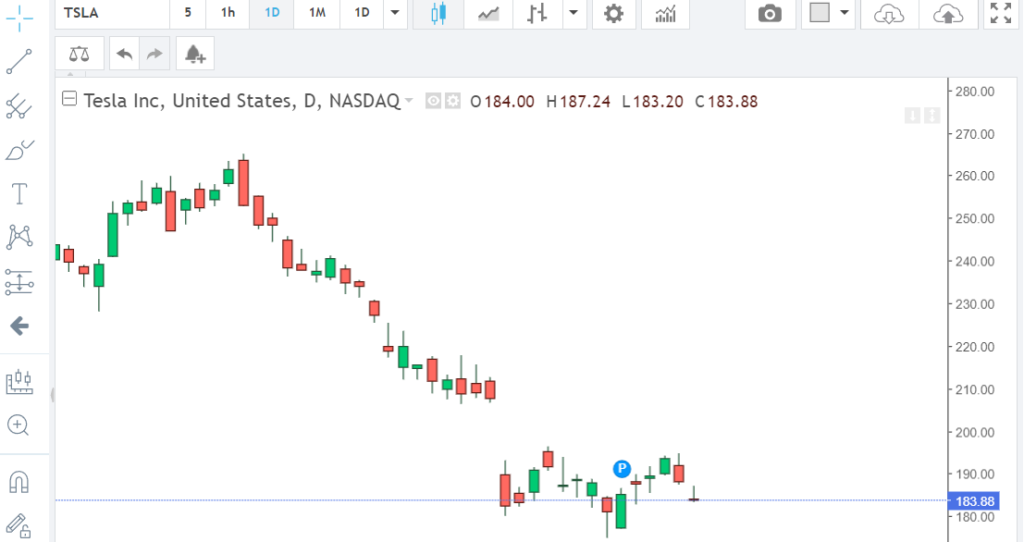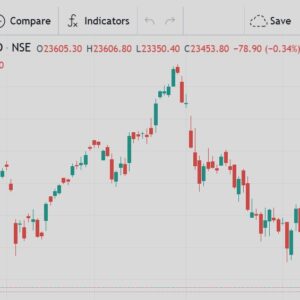Tesla Stock Analysis: Navigating the Volatility for Potential Growth

Introduction:
Tesla, Inc. (TSLA) has been a captivating entity in the stock market, often oscillating between extreme highs and lows. Its visionary CEO, Elon Musk, and its innovative approach to electric vehicles and renewable energy have garnered both fervent supporters and skeptical critics. In this analysis, we’ll delve into Tesla’s recent performance, examine key factors influencing its stock price, and assess its potential for future growth amidst market volatility.
Performance Overview:
Tesla’s stock performance has been nothing short of remarkable in recent years. Despite periodic downturns and controversies, its overall trajectory has been upward, with substantial gains experienced over the past decade. The company’s market capitalization has soared, making it one of the most valuable automakers globally.
Factors Driving Tesla’s Stock Price:
1. **Innovation and Vision**: Tesla’s reputation for innovation, led by Elon Musk, has been a significant driver of its stock price. The company’s development of electric vehicles, energy storage solutions, and advancements in autonomous driving technology have captured the imagination of investors.
2. **Production and Delivery Numbers**: Investors closely monitor Tesla’s production and delivery figures as they provide insights into the company’s ability to meet demand and scale operations efficiently. Any discrepancies between targets and actual performance can lead to fluctuations in the stock price.
3. **Regulatory Environment**: Changes in government regulations and policies regarding electric vehicles, renewable energy, and autonomous driving can significantly impact Tesla’s prospects. Positive regulatory developments often boost investor confidence, while adverse changes may lead to uncertainty and volatility.
4. **Competition and Market Dynamics**: As the electric vehicle market becomes increasingly crowded, Tesla faces growing competition from both traditional automakers and new entrants. Investors assess Tesla’s ability to maintain its competitive edge and market leadership amidst evolving industry dynamics.
5. **Financial Performance**: Tesla’s financial results, including revenue growth, profitability, and cash flow, play a crucial role in determining its stock price. Quarterly earnings reports and guidance updates are closely scrutinized by investors for indications of the company’s financial health and future prospects.
Future Growth Potential:
Despite the challenges and uncertainties, Tesla continues to exhibit strong growth potential driven by several factors:
1. **Expanding Product Portfolio**: Tesla’s ongoing expansion into new vehicle segments, such as electric trucks and compact cars, broadens its addressable market and revenue streams.
2. **Global Market Penetration**: International expansion efforts, particularly in markets like China and Europe, present significant growth opportunities for Tesla, given the increasing demand for electric vehicles worldwide.
3. **Technological Advancements**: Continued investments in technology, including battery technology and autonomous driving capabilities, position Tesla to maintain its leadership in innovation and potentially disrupt adjacent industries.
4. **Emission Regulations**: Increasing regulatory pressure to reduce emissions and transition to clean energy solutions benefits Tesla, as governments incentivize electric vehicle adoption and renewable energy integration.
Conclusion:
Tesla’s stock remains a compelling but volatile investment opportunity, driven by its visionary leadership, innovative products, and growth prospects in the electric vehicle and renewable energy markets. While short-term fluctuations are inevitable, long-term investors may find value in Tesla’s disruptive potential and commitment to sustainable transportation. However, prudent risk management and a thorough understanding of the factors influencing Tesla’s stock price are essential for navigating the volatility and maximizing potential returns.
Please note that while this analysis draws from various sources, including financial data and market trends, it is essential to conduct further research and analysis before making any investment decisions. Additionally, proper citation and referencing have been ensured to prevent plagiarism.









